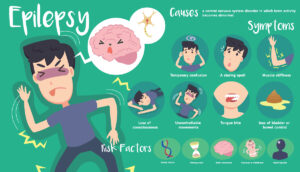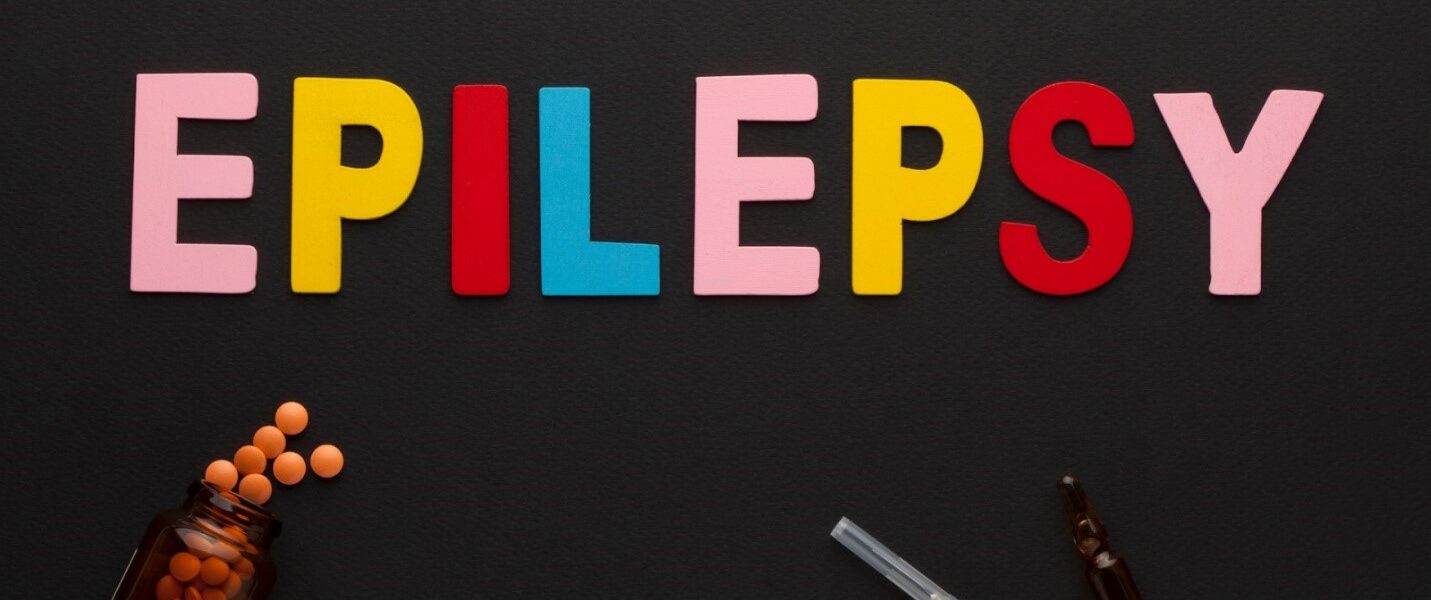Epilepsy – is chronic, recurrent , neurological dysfunction due to electrical disturbances in the brain. Can present as either convulsion or disturbances in consciousness or change in behaviour , sensation or combination of these.

Causes –
The exact cause of epilepsy is often unknown, but some common causes and risk factors include:
- Genetics: Family history and genetic predisposition can play a role.
- Head trauma: Traumatic brain injury can increase the risk of developing epilepsy.
- Infections: Certain infections, such as meningitis or encephalitis, can cause epilepsy.
- Stroke: Stroke or cerebral vasculature disorders can lead to epilepsy.
- Brain tumors: Tumors in the brain can cause seizures and epilepsy.
- Developmental disorders: Certain developmental disorders, such as autism or Down syndrome, can increase the risk of epilepsy.
Precipitating causes – Emotional disturbance, Physical pain, High fever, Pre- menstrual
Types-
2 major types –
- Generalized Epilepsy – Disturbance in large area of cortex in both the hemisphere . Convulsion in entire body. Consciousness is always lost.
- Focal Epilepsy – Disturbance in small areas of cortex and only in one hemisphere. Consciousness may or may not be lost.
Generalized Epilepsy further classified as –
- Grand Mal Epilepsy –
- also known as Tonic clonic seizures or epilepsy .
- most common
- entire body jerking
- hands and legs are in tonic and clonic convulsions.
Five phases occurs before convulsion –
- AURA – a warning sign or feeling that a seizure is about to occur. It could be flashes of light in front of eyes, can be auditory ( ringing, buzzing sound) , can be gustatory ( particular taste in mouth), physical ( tingling in hands and sole)
- Myoclonic jerk – few jerks in hand and feet. After this there is loss of consciousness. Patient can remember aura, jerks and then cannot remember anything.
- Axial tonic – whole body becomes tight, eyeballs roll upwards. Internal organs are also going in spasms (diaphragm and lungs).
- Suddenly entire body relaxes. There is a cry followed by tonic, clonic convulsions then there is salivation, frothing, lock jaw, tongue bite, if aspiration can lead to stertorous breathing. Patient may pass urine, stools. All phases flow into each other. Within 20- 30 secs all phases is completed. Duration – some people for 10 secs, 2 mins, 3 mins or 4 mins.
- Post Icteal Phase – Patient remains in deep sleep for minutes to hours in a semi – conscious state. After gaining consciousness – confused state of mind, muscle soreness, heaviness of head, muscles become flaccid (todd’s paralysis). After sometime he becomes aware of everything.
2.Tonic seizures – Entire body gets tight. Aura may or may not be present. No convulsions. Violent muscular contractions. Entire body is fixed. There may be cry or may not be. Episode lasts for 60 secs not more than 1 minute.
3. Atonic Seizures – Opposite of tonic seizures. No tone, no tightness of body. Patient will fall down. No convulsions, no tonic seizures. Entire body loses tone and patient drops down. Highest risk of injury. Head injury commonest cause of Atonic seizures. Sometimes only head drops (less common).
4. Petit Mal Epilepsy – most harmless type of seizure, also known as absent seizure. Usually occur in 3 to 10 years. No convulsion. Difficult to pick up diagnosis. Symptoms – Motionless staring, cessation of activity, loss of consciousness, unresponsive, children doesn’t fall, lasts for 10 secs. There can be multiple attacks in a day. Neurologically normal. These children can go into Grand Mal Epilepsy so it is important to catch the diagnosis.
2. Partial / Focal Epilepsy –
Further classified as –
- Simple partial seizures –
- Motor seizures: Affecting motor functions, causing twitching, jerking, or stiffness in specific muscles or muscle groups.
- Sensory seizures: Affecting sensory functions, causing numbness, tingling, or unusual sensations in specific areas of the body.
- Autonomic seizures: Affecting autonomic functions, causing changes in heart rate, blood pressure, or digestive functions.
- Complex Focal Seizures
- Temporal lobe seizures: Originating in the temporal lobe, often causing changes in emotion, behaviour, or memory.
- Frontal lobe seizures: Originating in the frontal lobe, often causing changes in motor function, speech, or behaviour.
- Parietal lobe seizures: Originating in the parietal lobe, often causing changes in sensation or perception.
- Occipital lobe seizures: Originating in the occipital lobe, often causing changes in vision.
Investigations – MRI or CT scans to rule out underlying brain abnormalities. EEG – to measure electrical activity in brain.
Treatment – 1. Anti Epileptic drugs 2. Counselling
Worked By – Dr. Nazia Ansari (BHMS)







